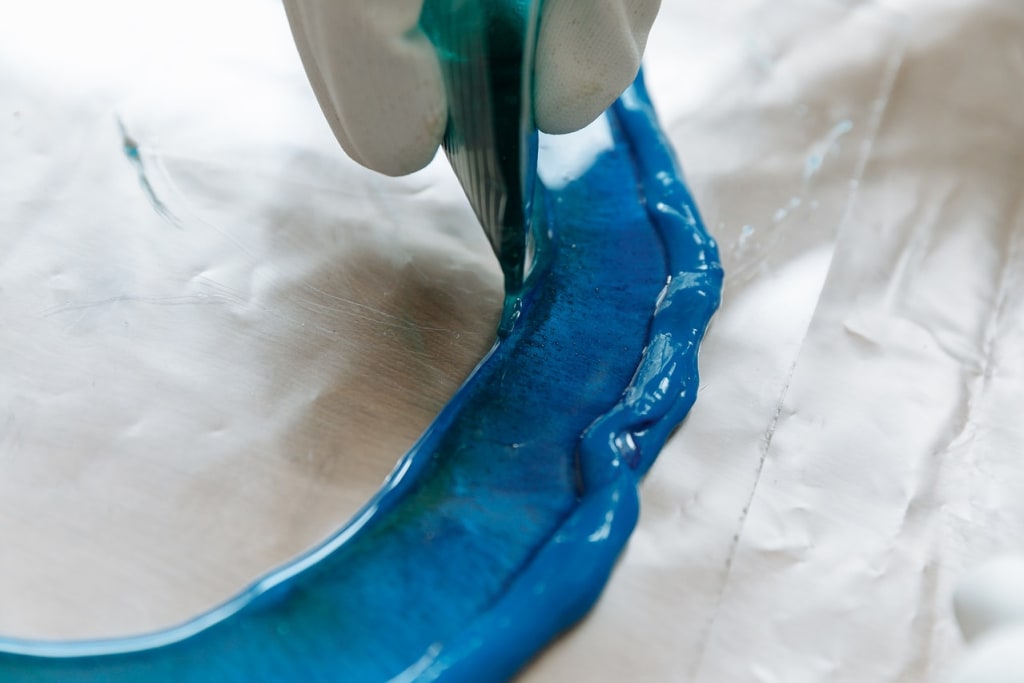Will rubber cement stick to silicone molds?
When it comes to rubber cement and silicone molds, there's a lot of confusion about whether the two can be used together. Some people say that rubber cement will stick to silicone molds, while others say that it won't. So, what's the truth?

When it comes to rubber cement and silicone molds, there's a lot of confusion about whether the two can be used together. Some people say that rubber cement will stick to silicone molds, while others say that it won't. So, what's the truth?
Well, the answer depends on a few factors. First of all, you need to make sure that you're using a high-quality silicone mold. If you're using a cheap or low-quality mold, the rubber cement may not stick very well. In addition, the type of rubber cement that you're using is also important. Some types of rubber cement are designed for use with silicone molds, while others are not.
When it comes to adhesives, rubber cement is a popular choice. It's strong, reliable, and affordable. But can it be used on silicone molds?
The answer is yes - rubber cement can be used on silicone molds. However, there are a few things you should keep in mind when using this adhesive.
First, make sure the surface of the mold is clean and dry. If there is any dirt or grease on the surface, the rubber cement will not stick.
Second, make sure the rubber cement is fully dry before using the mold. If the adhesive is still wet, it will not hold the mold together properly.
Third, use a liberal amount of rubber cement when bonding the mold to the surface. You want to make sure there is a good seal between the two surfaces to prevent leakage.
Can rubber cement be used on silicone?
When it comes to crafting the perfect mold for your next arts and crafts project, you might be wondering if rubber cement will stick to silicone.
The answer is: it depends. In some cases, rubber cement will stick to silicone quite well. However, in other cases the two substances may not adhere very well to each other.
In general, it is best to test out a small amount of rubber cement on a non-critical area of your silicone mold before using it for a more important project. This will help you determine whether the two substances are likely to stick together successfully.
If you're looking for an unconventional way to make custom silicone molds, you might be wondering if rubber cement will work. In this article, we'll explore the feasibility of using rubber cement as an adhesive for silicone molds, and provide some tips on how to do it safely and effectively.
There's a lot of confusion around what will and won't stick to silicone molds, so we're here to set the record straight! In this article, we'll talk about the best adhesives for silicone molds, and why rubber cement is a great option.
We'll also discuss why you might want to avoid using certain adhesives on silicone molds, and share some tips for getting the most out of your mold-making projects.
What adhesive will stick to silicone?
When it comes to crafting your next DIY project, it's important to use the right materials. But with so many different types of adhesives on the market, it can be difficult to know which one is right for the job. In this article, we'll explore the differences between rubber cement and silicone molds and help you decide which one is best for your needs.
Rubber Cement vs Silicone Molds
The two most popular adhesives on the market are rubber cement and silicone molds. Both have their pros and cons, so let's take a closer look at each one:
Rubber cement is a type of contact cement that is used to bond two surfaces together. It dries quickly and forms a strong bond, making it ideal for projects that require a quick turnaround time.
When it comes to sticking things to silicone, there are a few factors to consider. Each adhesive has its own set of properties that make it more or less suited for sticking to silicone. Let's take a look at some of the most popular adhesives and how they perform when it comes to sticking to silicone.
Silicone Molds
If you're looking for a great adhesive for sticking things to silicone, you need to consider how your mold will perform after it's made. There are many factors that go into the durability of a silicone mold, including the type of silicone used, the thickness of the mold, and the type of mold design.
The most common types of silicone molds are the following:
Silicone Rubber Molds
Silicone rubber molds are typically made from two parts: a mold base and a silicone mold. The mold base is usually made of wood, plastic, or metal, and supports the silicone mold.
How do you stick silicone together?
We get a lot of questions here at the Stick Tech laboratory and one of the most common ones is "What adhesive will stick to silicone?"
It's a great question, because silicone is unique material that doesn't react well with many adhesives. In this article, we'll take a look at some of the best adhesives for silicone and why they work well.
But first, let's take a look at what makes silicone so difficult to bond with adhesives.
Why Adhesives Don't Stick to Silicone
One of the problems with bonding adhesives to silicone is that silicone is a non-polar material. This means that the adhesive and silicone molecules don't have any positive or negative charges that would allow them to bind together.
People have been bonding materials together for centuries. But what is the best way to stick silicone together? In this blog post, we'll take a look at some of the most popular methods and see how they compare.
We'll start by looking at the basic types of silicone adhesive: RTV silicone, silicone sealant, and silicone rubber. Each of these adhesives has its own strengths and weaknesses, so let's take a closer look.
RTV Silicone
RTV silicone is a two-part adhesive that cures when it comes into contact with moisture. It has high tensile strength and can be used to bond a wide variety of materials, including metal, plastic, glass, and wood. However, it's not very flexible and can be difficult to work with.
What surfaces can I use rubber cement on?
When it comes to rubber cement, the possibilities are endless. You can use this versatile adhesive on a variety of surfaces, including paper, plastic, metal, and more. In this article, we'll explore some of the most popular surfaces that rubber cement can be used on.
Paper
One of the most popular applications for rubber cement is in paper crafts. Whether you're creating a scrapbook or assembling a poster, rubber cement is a great way to keep your pages together. It's also a great way to add extra detail and depth to your project. For example, you can use rubber cement to attach photos or other elements to your paper. This will give your project a more polished look and make it more durable.
Plastic
If you're looking for a quick and easy way to attach plastic pieces together, rubber cement is the answer. It'll work on most types of plastic including acrylic, vinyl, and more.
Metal
If you're creating a project that requires a lot of strength, you'll want to use a stronger adhesive. Rubber cement is one of the best options available, and it can be used on most types of metal. It's a great way to bond metal parts together, and helps to make your project stronger and more durable.
Glass
For projects that require some extra strength, rubber cement is a great choice. It works on virtually any type of glass and can be used to bond together pieces of glass.
About the Creator
Glitter Fuel
Glitter Fuel offers beautiful, solvent resistant polyester face and eye glitter bundle with a sparkle that is out of this world. Free shipping on order above $35






Comments
There are no comments for this story
Be the first to respond and start the conversation.